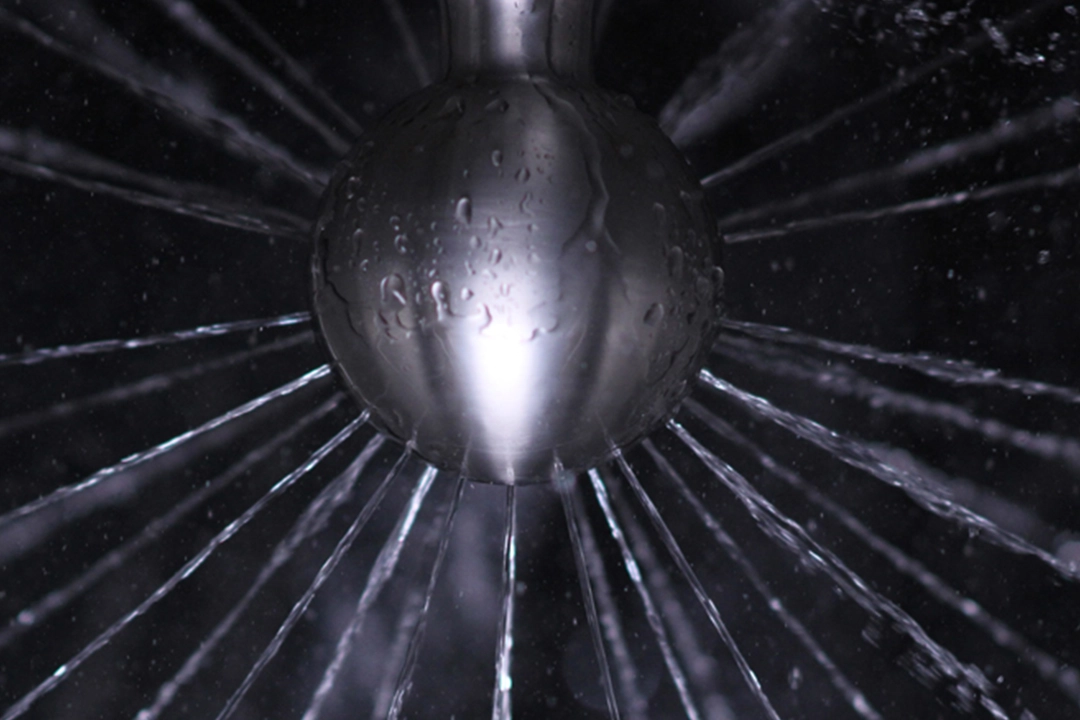There are some pretty specific reasons for selecting static spray balls versus rotating or impingement devices when it comes to sanitary component solutions. Size of surface area, design of tank, types of soils to be cleaned and obstructions within a tank are just some of the items to be taken into consideration.
Brian Schaal, mechanical designer at Sani-Matic, and Wayne Huebner, an applications engineer for the company, discussed what is involved in the decision-making and design process of sanitary component solutions.
When selecting the right spray technology, Schaal listed the following key questions to consider:
- What types of soil are being cleaned?
- What is the diameter of the vessel to be cleaned?
- How much flow rate is available?
- Are there internal obstructions within the tank?
- What is the port size?
- What is your budget?
What types of soil are being cleaned?
“In a round or spherical tank we have to first determine the type of soils being cleaned,” Schaal said. “That will determine if impingement is required or not. Typically, anything that is water soluble can be cleaned with chemical, heat and water using static spray balls because we can rely on the cascading solution to clean all the surfaces.”
There are times a static impingement device can be used in tandem with a spray ball.
“Sometimes, you just need a little extra to knock tougher soils loose to get the cleaning process started,” Schaal said. “You would still use a static spray ball with a flow rate up to 70 psi to finish the job with better efficiency and less water consumption.”
Both Schaal and Huebner added that when choosing sanitary component solutions for cleaning a lighter, non-viscous soil, static spray balls clean faster than impingement devices. “Static spray balls will send wash solutions in all directions at once, while impingement sprays only send wash solutions to a small area of the tank at any given time. This means that an impingement spray may take several more minutes to provide wash solutions to all of the tank’s surfaces,” said Huebner.
What is the diameter of the vessel to be cleaned?
Vessel diameter determines the necessary flow rate to ensure a complete clean.
The shape of the tank is also important. “With dish-type heads that are rounded on the top of tanks, the spray doesn’t have to get right above a ball. It can hit an area a little bit to the side of the head and then because of the shape of the head, it’s going to force the fluid above that area and cascade over it,” Schaal said.
“Now, with flat-top tanks, we can’t do that. We have to use either multiple spray balls or a ball with a flat top so the spray will go straight up to hit that area because we cannot rely on the cascading action.”
Spray ball shape demands can vary between industries.
“We use flat-top spray balls primarily for pharmaceutical manufacturing equipment cleaning because the directionally drilled patterns give us a full 90 degrees of spray angle to work. However, we will also use them on food grade applications with flat-top tank heads,” Schaal said.
How much flow rate is available?
During the initial quoting process Sani-Matic will identify the size of the tank that needs to be cleaned.
“Based on that, we have a calculation that we use to determine the flow rate needed to clean the tank. If the customer can’t supply the recommended flow rate we’ll try to work with what is available,” Schaal said. “If the flow rate is marginally below what is recommended, we’ll consider using a rotary spray ball because they don’t require as much flow.”
“There are some times that no matter what we do to work with a customer’s available flow rate, their pump isn’t going to supply sufficient flow to get their application clean,” added Huebner. “In those cases, we have to tell them they’ll need to purchase a new pump.”
Are there internal obstructions within the tank?
Obstructions in a tank like heating coils, agitators, baffles and ladders are sometimes better managed with rotary spray balls. These would be recommended to ensure sufficient coverage of a larger area and to reach all sides of any obstructions.
“Once in a while customers provide incomplete drawings, or none at all,” Schaal said. “So, we need to understand the application to ensure we can get proper cleaning and sanitation – covering the area a lot more effectively. Sometimes that means going to multiple rotary spray balls, to make sure we hit all the obstructed areas.”
What is the port size?
The port size is going to determine how large a spray ball we can get into the tank and how much flow we can get through the spray ball. Certain size connections on the spray ball will also determine available flow.
“We need to determine the diameter on the ball and the connection size to get the right flow,” Huebner said. “If you only have a ½-inch connection, you can only get 12 gallons per minute through the spray ball, so if you’re cleaning a big vessel, obviously that won’t work.”
“It’s a balance of ball diameter versus the connection size on the ball with the flow rate that is needed.”
What is your budget for sanitary component solutions?
Weighing cost versus need comes strongly into the decision-making process for sanitary component solutions.
“Rotary spray balls tend to be one and a half to two times the cost of static spray balls at a minimum. And, with larger impingement devices you could see a $4,000 to $5,000 sale price on those,” Huebner said.
“Not to mention the costs associated with the maintenance and replacement parts needed to keep rotating devices functioning properly,” Schaal added. “Depending on the device, something as simple as lime scale buildup can inhibit the device’s rotation. A small piece of debris can also get stuck in the device and cause it to seize up; in the case of a PTFE (Teflon) device, which cannot be taken apart, the entire device may need to be replaced.”

